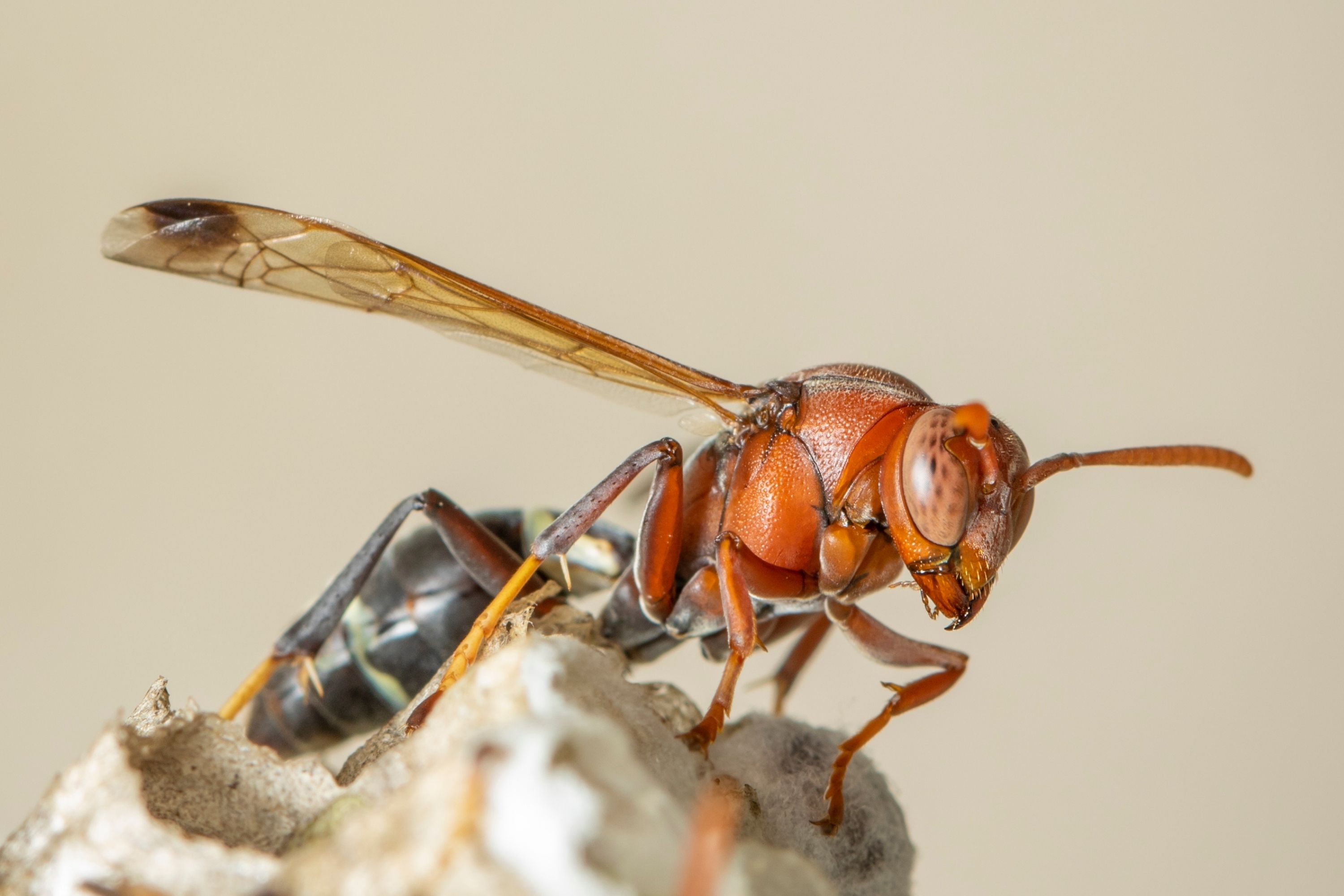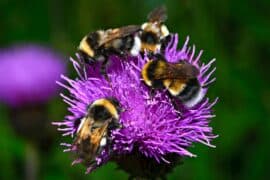Common paper wasp
(Polistes exclamans)

Description
Polistes exclamans, the Guinea paper wasp, is a social wasp and is part of the family Vespidae of the order Hymenoptera. It is found throughout the United States, Mexico, the Bahamas, Jamaica and parts of Canada. Due to solitary nest founding by queens, P. exclamans has extended its range in the past few decades and now covers the eastern half of the United States, as well as part of the north. This expansion is typically attributed to changing global climate and temperatures. P. exclamans has three specific castes, including males, workers, and queens, but the dominance hierarchy is further distinguished by age. The older the wasp is, the higher it is in ranking within the colony. In most P. exclamans nests, there is one queen who lays all the eggs in the colony. The physiological similarities between the worker and queen castes have led to experiments attempting to distinguish the characteristics of these two castes and how they are determined, though males have easily identifiable physiological characteristics. Since P. exclamans live in relatively small, open combed nests, they are often subject to predators and parasites, such as Chalcoela iphitalis, Elasmus polistis, and birds. P. exclamans have defense and recognition strategies that help protect against these predators and parasites. There are two forms of Polistes exclamans in the United States: typical and variable. The typical form is found in the south-eastern United States and inhabits the following states: North Carolina, South Carolina, Georgia, Alabama, Florida, Texas, Louisiana, Oklahoma, Arkansas, Kansas, Colorado, and Arizona. Although this form's color can vary, it almost always has some yellow coloring. Both the propodeum and the mesonotum are marked with yellow. The propodeum normally has four yellow stripes, whereas the mesonotum has yellow lines. It also may have yellow markings on its head. The wings, however, are not yellow in color or yellow tinged like some other wasps but are infuscate and purple in color. The typical form often can be confused with Polistes fuscatus, Polistes crinitus, or Polistes minor. The variable form is red-brown in coloring. The middle of the flagellum, the base of the abdominal segments, and the outer side of the mid and hind tibiae are infuscate or black colored, as are the wings. Instead of yellow markings, the variable form has pale ivory-white markings that are dispersed throughout the body.
Taxonomic tree:







